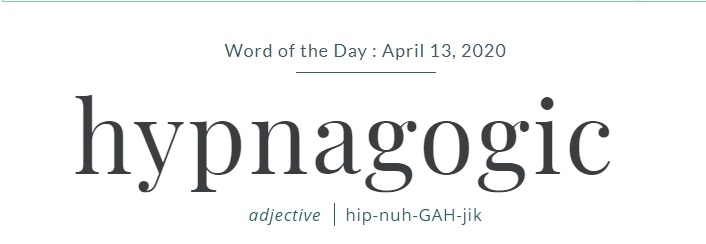Definition
: of, relating to, or occurring in the period of drowsiness immediately preceding sleep
Did You Know?
“The hypnagogic state is that heady lull between wakefulness and sleep when thoughts and images flutter, melt, and transform into wild things,” wrote Boston Globe correspondent Cate McQuaid (October 1, 1998). Some scientists have attributed alien-abduction stories to this state, but for most people these “half-dreams” are entirely innocuous. Perhaps the most famous hypnagogic dream is that of the German chemist Friedrich August Kekule von Stradonitz, who was inspired with the concept of the benzene ring by a vision of a snake biting its own tail. You’re not dreaming if the Greek root hypn-, meaning “sleep,” seems familiar—you’ve seen it in hypnotize. The root -agogic is from the Greek -agōgos, meaning “inducing,” from agein meaning “to lead.” We borrowed hypnagogic (also spelled hypnogogic) from French hypnagogique in the late 19th century.
Examples
“Many of us have experienced hypnagogic hallucinations, the often terrifying perceptions … that occur as we hover between sleep and wakefulness. Hallucinations tend to comprise shadowy figures nearby, often perceived as intruders.” — Devon Frye, Psychology Today, 15 Aug. 2019








